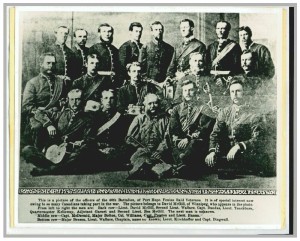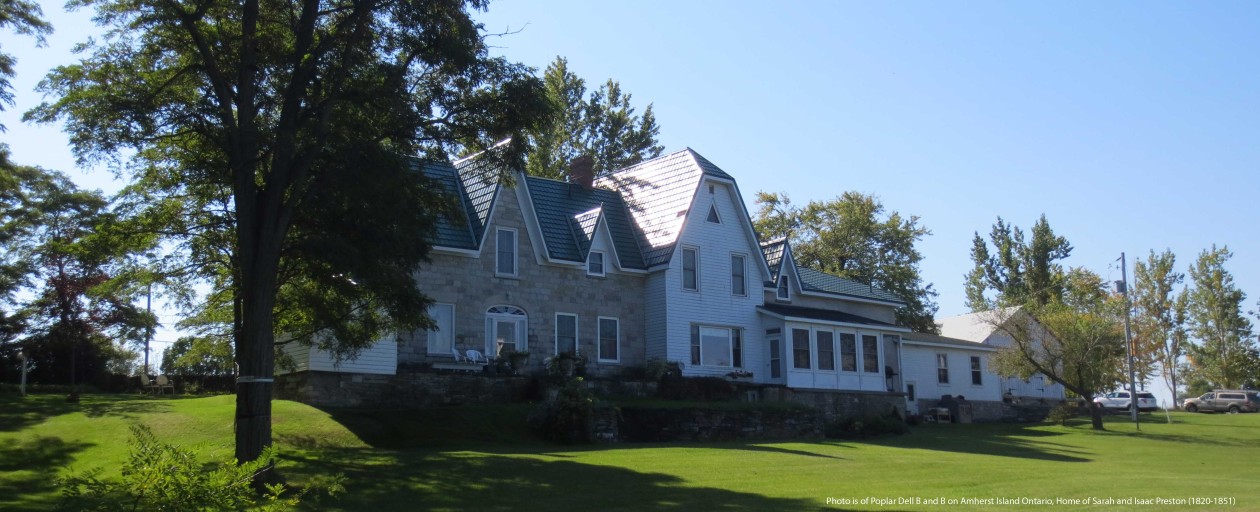What is your first impression of the Orangemen? Angry old white men with black bowler hats and orange sashes, marching to the fife and drum? Not letting long ago battles die? Bigotry? “Raisin hell”? Yes? Well it is yes and no. How about doing charitable work? Defending Canada in the Upper and Lower Canada 1837 Rebellions and the Fenian Raids when there was no Canadian army? All true. The Orange Order were both bad and good, and are woven into my book, from the characters’ experiences.
Here’s a sample of ongoing Belfast traditions – 2015.
And a while back, the Orange parade of 1896 in Orono Ontario
History
The first Orange parade took place July 12, 1796, through the property of the Gosford Estate, County Armagh, Northern Ireland. My 3G grandfather Isaac Preston was there as one of the first members. The order, with traditions taken from the Masons, established themselves a defenders of the British ways and power, as opposition to the growing swell of Irish Catholic discontent. To be Catholic in Ireland was to be a second class citizen. Orange members were farmers, tradesmen, merchants, military men and ministers! Membership and lodges were formed in a feverish pitch. When the Irish Rebellion of 1798, broke out, the Orangemen filled the militia and professional forces of the Crown.
In Canada, as settlers of Irish descent, became established, so too did the Lodges. The 1878 Historic Atlas of Northumberland and Durham County listed 6 Lodges for a population of 4,114 in Manvers Township. Most of the adult men, would have belonged.
Social club
In early Ontario, many areas including the north shore of the St. Lawrence and the northern townships of Durham County, were settled by Irish Protestants. The Order provided a social scene, initially for men to gather, share stories, and a little drink. (Little being a relative term). Later women were included with their own activities in the early 1900’s. I recall women marching in the early 1960’s in Peterborough on July 12, with white dresses and white gloves.
Community service
Collections were made and turned over to those less fortunate in the community. That included non- Protestants. Work bees were organized to help raise barns, bring in crops, help the sick or injured.
Militia service
The bulk of the Upper Canada militia during the Rebellion of 1837, were Orangemen. To volunteer to defend your country (Great Britain) and your faith, was to be admired, and expected. Again, when the Fenians crossed the Niagara River in 1866, the Orangemen went to battle against the Irish Republican invaders from the USA.
 Note: Captain Isaac Preston Jr., in the second row. Col. Williams died during the Riel Rebellion. Sub note: Isaac Jr.’s daughter Caroline married Sam Hughes, but she died shortly after her marriage. Hughes became Canada’s Minister of Militia and Defense during WWI.
Note: Captain Isaac Preston Jr., in the second row. Col. Williams died during the Riel Rebellion. Sub note: Isaac Jr.’s daughter Caroline married Sam Hughes, but she died shortly after her marriage. Hughes became Canada’s Minister of Militia and Defense during WWI.
Continued …

